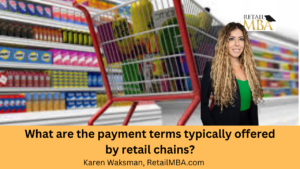Average Transaction Value

The Importance of Understanding Your Average Transaction Value
No matter the industry or size of your business, knowing your average transaction value (ATV) is of crucial importance for its growth and sustainability. ATV provides insight into customer spending patterns as well as profitability.
In this article, we’ll go over what ATV stands for and how to calculate it, along with proven strategies for increasing ATV.
How to Calculate ATV
As you run a business, you’re often met with new terms and acronyms; some may be easy to grasp while others require further explanation. Average Transaction Value (ATV) may seem complex at first, but in practice is actually quite straightforward: ATV measures the average customer expenditure either in-store or online with your business; increasing this figure can increase both overall revenue and profit; thus it’s essential to fully grasp.
An average transaction value (ATV) of your business can be determined by taking its total sales during a specific timeframe and dividing by its number of transactions – whether this period spans days, weeks, months or even years. Once complete, this figure can then be compared with previous periods and other key performance indicators to gauge its progress and success.
Evaluation of Performance
Understanding your ATV can help you measure the success of your sales teams and strategies for attracting and converting customers. A higher ATV indicates that they’re using effective techniques and approaches to encourage customer purchases.
Understanding your ATV can also help you identify any issues threatening to impede your bottom line. For instance, an unexpected decrease could indicate that customers find your products less appealing, or that you are selling too many at one time.
Increase your ATV in several easy and cost-effective ways; just one such method is offering product upgrades or cross-selling opportunities – proven strategies which could increase it up to 30%!
Enhance your store layout to increase ATV. For example, if you sell children’s clothing, consider placing that section towards the back. This will force parents to browse all other areas before reaching it – and seeing more merchandise!
Understanding ATV can be the deciding factor between success and failure for any business, and understanding it is key for sustained growth. By evaluating your ATV and making any necessary adjustments, you can improve your bottom line while setting up your company for sustainable expansion.
Why ATV Matters
Gaining new customers will increase your revenue, but doing so comes at a price. Marketing expenses associated with digital campaigns can quickly add up; increasing average transaction values per new customer is one way of ensuring you receive a proper return on your investment.
As a retailer, there are various strategies you can employ to increase ATV. One is by improving product selection so as to better meet customer needs and preferences; another way is creating more opportunities for upselling and cross-selling that encourage customers to spend more during each visit.
ATV can be an important metric to evaluate because it gives you insight into how your business operates, and helps make smarter decisions about pricing, products, and customer behavior that will result in increased profits and better experiences for all your customers.
To calculate an ATV, it’s easy: just add up all sales over a given period and divide by the number of transactions during that same time frame. No matter the length of time – whether one day, week, month or year – just follow these steps to easily calculate an ATV.
Compare Your Annual Turnover (ATV) With Other Retailers To See How Well Yours Measure Up ATV can serve as an invaluable indicator of success, helping to pinpoint any areas in which changes need to be made in your business model.
Being familiar with your ATV is essential to the health of any retail business. Knowing this figure gives you a good sense of what to expect from each sale, which helps with planning purposes, as well as helping identify trends such as whether ATV tends to drop on Tuesdays or increase on weekends.
An accurate ATV can also help you make more strategic decisions regarding your advertising and marketing budgets. For example, if your ATV increases on Mondays, investing more in marketing campaigns during this period could boost business. Conversely, if it drops during Friday afternoons you could offer specials as a way of drawing more customers in.
Ways to Optimize ATV
Average transaction value (ATV), one of the key sales KPIs, measures how much consumers spend when they purchase products or services from your business. ATV helps measure whether your pricing and product strategy are successful and increasing it could increase revenue and profitability significantly.
To determine your ATV, start by determining the total value of all sales for a specified timeframe – this could be one week, month, quarter, or year – then divide that figure by the total transaction count during this time. This will provide your ATV, or average transaction volume per transaction.
There are various strategies you can employ to maximize the return of your ATV investment. For instance, you could promote more expensive items while decreasing prices of lower priced ones in order to encourage shoppers to spend more with your business. You could also use ATV to assess sales tactics effectiveness and make changes as needed.
Training your sales team in upselling and cross-selling techniques can also help increase ATV. These tried-and-tested strategies can encourage consumers to upgrade or add-on additional purchases that increase total expenditures. Furthermore, employees can help boost ATV by displaying complementary items together or offering discounted packages of goods.
An ATV (average customer value) ratio is an integral component of break-even analysis, which allows businesses to assess how much revenue their sales require in order to cover fixed costs and COGS. A high ATV indicates that your marketing and sales strategies are generating more customers and profits than they cost to acquire.
ATV can be a useful metric, but it alone may not capture key metrics like lifetime value and ancillary revenue. To gain a fuller picture of your customer relationships and devise effective strategies to ensure continued success, try measuring Value Per Transaction (VPT). This metric includes ATV as well as other forms of customer value such as repurchase rate and lifetime value, making it a useful way of gauging strength of relationships while making strategic decisions for further expansion of business operations.
Conclusions
Average transaction value is an essential metric to monitor because it allows you to measure how much customers are spending with your company and identify areas for growth like cross-selling and upselling.
Calculating average transaction values can be accomplished quickly by taking a period’s total revenue and dividing it by the total sales or transactions in that same time frame. This calculation should be performed either daily, weekly, monthly or annually in order to provide accurate and comparative performance metrics.
There are a few strategies you can employ to increase average transaction value (ATV), such as offering discounts or coupons and upselling products or services. By employing these techniques, your ATV will increase and your business become more profitable over time.
One effective strategy to increase average transaction value is offering bundle deals. This tactic works well across retail businesses of all kinds, as it enables them to sell discounted sets of products like tool kits or back-to-school supplies – for instance hardware stores might sell tool sets while stationery shops might feature their curated selections as bundle deals.
Another effective strategy for increasing average transaction value is providing quality customer service. This is especially essential in today’s digital era where customer experience is becoming an integral component of competition among businesses. By providing exceptional service to your customers you increase their likelihood of returning and referring other people to your business.
Gaining new customers may not always be simple, but increasing average transaction value (ATV) is certainly worth your while. By understanding customers’ purchasing patterns and trends, strategic decisions can be made that can increase ATV. By employing these tactics you can boost revenue and profits without incurring new customer acquisition costs. For more information about improving ATV listen to the Epos Now Business Podcast available on Apple Podcasts & Spotify where Jodie Thompson from our Sunshine Coast office discusses with host Gavin Nash how she and her team were able to double their ATV since last year by emphasizing customer service delivery and product offerings.
Here a are a few blogs that may interest you!
1. Product Distributors – How to Work with Distributors!
Step-by-step training on how to sell to retail chains!
We explain exactly how to do that and how to get started today. I’ve taught over 100,000 of companies over the years across the globe on how to get your products to the stores. And so we’re here to support you. Or please subscribe to our Youtube channel and or be on the lookout for additional training that we create.
We are here to expedite the process of generating revenue with your physical products and that’s what we’re all about. Take a look at our advanced training, live events, certification programs and so much more.
In this training, I will discuss some of the things to think about when approaching a retailer to sell your products and become a vendor. Hope it helps! 🙂
Karen Waksman,
Retail MBA
Questions? Contact Us!
1-855-Retail-2 (Call or Text)
Email: info@retailmba.com
Retail MBA provides a step-by-step formula on How to Sell to Major Retailers, Online Retailers, Smaller Retailers, Catalogs and More. No Experience Required! These solutions continue to convert for clients year-over-year! These are Time-Tested and Proven Strategies that we utilize ourselves when going after stores! Everything we teach, we test. Want access to these formulas? ANY one of our programs and coaching systems gives you access to them now. With that said…
Here are 5 Easy Ways to Work with Us:
1) Free Training – If You Would Like to Join Our Next FREE Webinar Training Called “Retail Chain Store Secrets – How to Sell to Major Retail Chains. No Experience Required” Then Sign Up NOW To Learn All About Selling into Retail Chains By Clicking Here!
2) Retail MBA Year Long Coaching and Training System – Our Year Long Coaching and Training System with Karen Waksman is POWERFUL! This is our most popular training and coaching system! We walk you through how to approach, pitch and sell to retail chains and we coach you along the way! Join us by Clicking Here!
3) Masterclass Intensives – Want to Join our Next 4 Week Elite Retail MBA Masterclass Intensive? These Intensives Are EPIC for people who Love Fast Paced Learning – Homework, Retail Coaching, Developing Your Strategy, Buyers Contacts and More! These Events Are Held Every Quarter. Join us by Clicking Here!
4) Done-for-You Program – If You Want Karen Waksman and Her Team to Reach Out to Your Top Dream Retail Chains On Your Behalf – And You Have a Retail-Ready Product, Check Out our Epic Done-For-You Service by Clicking Here!
5) In Person Events – If You Want to Learn LIVE and Meet Karen Waksman in Person at Our Next “America’s Next Retail Product: LIVE Event with Other Like-Minded Individuals in Beautiful San Diego, CA! We Would LOVE to Have You Join Us by Clicking Here!

Check Out Our Additional Blog Posts Here:

Retail Terms
Retail Terms – What are the payment terms typically offered by retail chains? Click Here to Learn More!

Retail Vendor
Retail Vendor – What are the common mistakes to avoid when selling to retail chains? Click Here to Learn More!

How to Sell Your Holiday Products to Retail Chains
New Training on How to Sell Your Holiday Products to Retail Chains


Ulta Beauty Vendor
Ulta Beauty Vendor – How to Sell to Ulta Beauty Stores. Click Here to Learn More!

Retail Strategy
Retail Strategy – How do I handle negotiations with retail chains? Click Here to Learn More!


